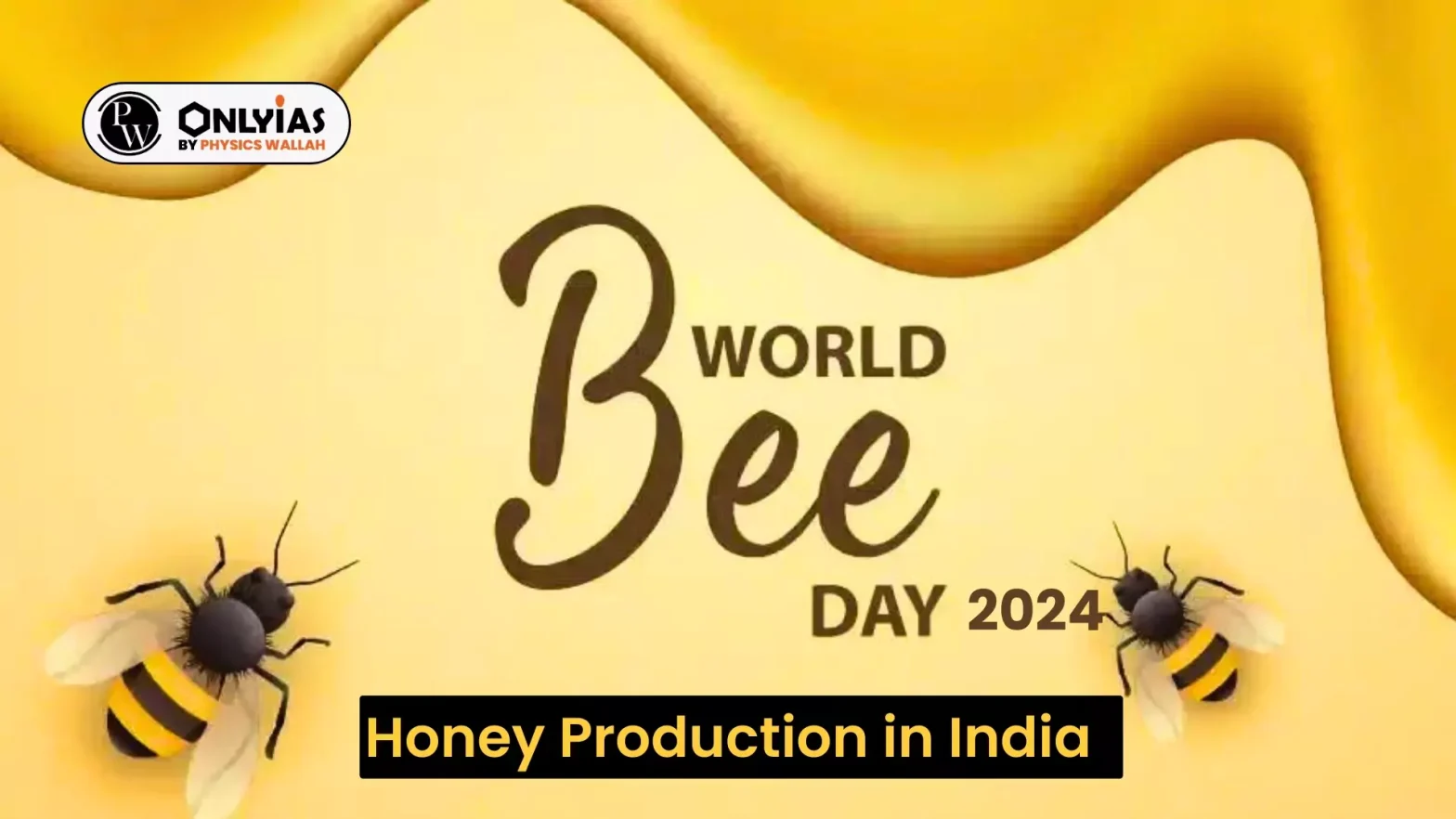Context
World Bee Day is celebrated every year on May 20 to mark the birth anniversary of Anton Jansa, who has mastered the skill of beekeeping.
Status of Honey Production in India
- Role of Honey Bees in Global Food Production: The honey bee is one of the most important species and is responsible for the production of about 70 percent of global food through pollination (UN Environment Programme).
- Projected Growth of the Global Honey Market: The global market for honey is expected to grow at a CAGR of 5.2 per cent, from $9 billion in 2023 to $13 billion in 2031.
- India’s Honey Exports: India, being the seventh largest honey producer, exports around 75,000 million tonnes of natural honey to major destinations including the US and the UAE.
- Decline of Honey Consumption in India: Despite its health benefits, per capita annual consumption of honey in India has significantly declined after the pandemic and remains at 10 gm compared to developed nations’ 3-4 kg.
- Registered Beekepers: About 14,000 beekeepers are registered on the Madhukranti portal of the National Bee Board, with more than 200 registered societies.
Enroll now for UPSC Online Course
Challenges Associated With Honey Production and Marketing
- Marketing Challenges: From the growers’ perspective, low consumption and sluggish market growth are discouraging and pose significant marketing challenges.
- Export Price Regulations for Indian Honey: The government recently imposed a minimum export price of $2 per kg, while according to recent USDA data, US imports Indian natural honey at around $1.1 per pound (same as MEP), which is comparatively lower than other international players.
- Local Market Challenges: Due to limited industry collaboration, beekeepers are often forced to sell in local markets at a price range of ₹100-110 per kg, depending on the season. Such prices are not encouraging.
- Limited Players: The long-term revival of the honey industry requires a multifaceted marketing strategy. The organized Indian honey market has limited players, and there is significant potential for more players, especially start-ups and Farmer Producer Organisations (FPOs).
- Lack of NMR Testing: India lacks adequate infrastructure to meet NMR testing requirements.
Way Forward
- Refining of Branding Strategies: While some FPOs have started developing a honey value chain, they still need to refine their branding strategies.
- Organizing National Level Honey Fair: Similar to the SARAS fair, the government should organise annual national-level flagship fair devoted to honey and associated products, bringing together buyers and sellers.
- This year, Maharashtra initiated a State-level honey fair, but there is a need for collaboration across States.
Nuclear Magnetic Resonance (NMR) Testing:
- NMR testing is a method that analyzes the composition of a product on a molecular scale. It serves as an analytical chemistry technique employed in both quality control and research to assess the content, purity, and molecular structure of a sample.
|
- Promoting Collaboration: Furthermore, FPOs and start-ups should be encouraged to collaborate with industries such as pharmaceuticals, cosmetics, wine, etc., to provide consistent price support for growers.
- Ensuring Fair Prices for Growers: It is important to ensure a guaranteed price for growers at a minimum 40 per cent margin above the production cost.
- Incentivizing Grower Innovation: Providing adequate compensation to growers would motivate them to diversify into innovative honey products and improve their livelihoods.
- Enhancing Testing for International Honey Branding: To promote honey branding in international markets, efforts should be made to improve NMR testing, a prerequisite for exports.
- Empowering Indigenous Honey Producers: India must protect indigenous communities engaged in honey production, highlighting the local stories of honey growers and their unique products through product labeling.
- Enhancing Market Value: To protect the product’s origin and ensure its authenticity, three honey products have been registered under the Geographical Indication tag, but more efforts are needed to enhance their market value.
Enroll now for UPSC Online Classes
Conclusion
The honey value chain should incorporate blockchain applications to connect beekeepers, buyers, quality testing labs, and aggregators, thereby creating a sustainable digital honey marketplace.
![]() 20 May 2024
20 May 2024

